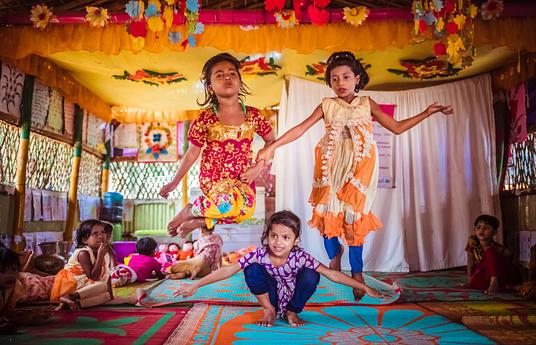Nearly half of the worlds 700 million extreme poor are children. Let’s start with that. More than 300 million children survive on less than $1.90 a day. It’s an appalling stat.
Research tells us that poverty has deleterious effects on children across a range of indicators. It has significant academic costs, particularly during early childhood, delays or disrupts key psychosocial developments, and is linked with higher instances of health problems. In the long term, poverty impacts children’s development and can lead to lower-income and poorer health in adulthood.
And while the world has made significant progress reducing poverty over the last 30 years – today more than a billion fewer people live in extreme poverty than in 1990 – extremely poor families are increasingly concentrated in places where it is difficult to access resources, like rural communities in developing countries that are not reached by government services.
For children in these families, endemic or generational poverty is often the norm. Ensuring they can lead healthy and productive lives often starts with providing the right mix of services, skills, and knowledge for their parents or caretakers. Even then, fragile, crisis, and humanitarian contexts exacerbate these challenges. (Many children in fragile settings have been exposed to significant violence and trauma, among other compounding factors.)
Ishita and her mother, Manju (cover photo), live in Cox’s Bazar, Bangladesh, where the local economy was upended by the effects of the Rohingya humanitarian crisis. The massive influx of nearly a million Rohingya people over the last two years has had a varying and complex impact on everything from the price of staples like rice and fish to the market rate of day labor. But for Manju, the results were clear: costs rose; wages fell.
To provide for her daughter, Manju has overcome incredible challenges throughout her life – child marriage, her husband’s death, a car accident.
“My childhood was short-lived,” said Manju. “I was only 14 years old when I got married. Ishita was born within a year. She was four when my husband fell sick and suddenly died.”
But the economic shock of the humanitarian crisis almost proved insurmountable. With the price of daily essentials rising by the day and the income from her home sewing business falling, her family was at risk of slipping further into poverty. Ishita’s future was in jeopardy.
Manju took action, and today her tailoring shop is thriving, she owns new assets – and Ishita is going to school. “I want everything for my daughter,” Manju told us. “I want her to learn and enjoy school, to go to college and to university.”
At BRAC, we believe the world’s most urgent issues deserve the world’s most effective solutions. Our pioneering Ultra-Poor Graduation model has empowered more than two million families like Manju’s to break out of the poverty trap with confidence and dignity.
That belief is also why we facilitate learning, development, and healing through play for children in Cox’s Bazar like Ishita. We have adapted our low-cost, high-quality, early learning model, Play Labs, which was created in partnership with the LEGO Foundation, to the unique needs and constraints of the humanitarian context in both the Rohingya settlements and the host communities surrounding the settlements.
BRAC’s holistic approach has proven effective time and again. In fact, research in Bangladesh has shown that 95 percent of participants who have gone through the Graduation program get out of ultra-poverty and stay out for years after the program ends. And early results from research being done on the Play Lab model has shown significant positive effects on children’s cognitive and motor development.
So, while global extreme poverty can at times feel like an intractable challenge, it is vital to remember that we are making progress – and that there are more than 300 million children like Ishita whose future is on the line.
As Manju told us,
Together, we can end poverty.
Linked Articles:
2. https://www.worldbank.org/en/topic/poverty/overview
3. http://sci-hub.tw/10.1093/qje/qjx003
To know more about the BRAC's Humanitarian Play Labs, check out their innovation page.

